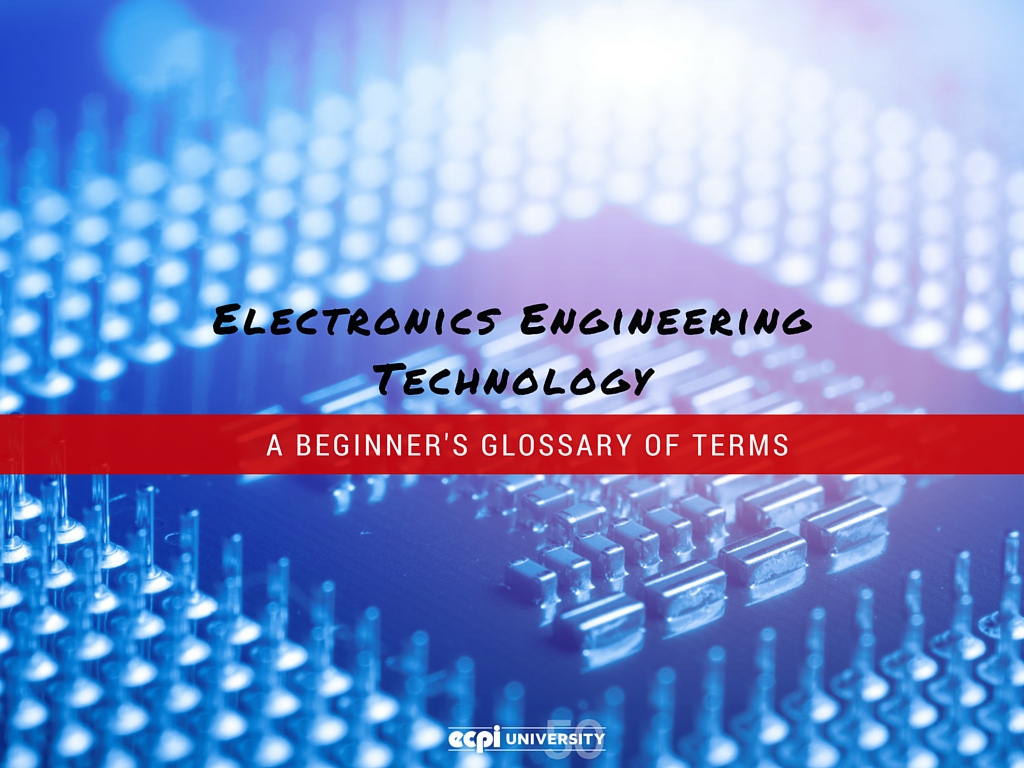
Electronics Engineering Technology: The Beginner's Glossary of Terms
The essential tool for learning about electronics engineering technology is a Scrabble board. Actually, you don’t even need the board, you just need the letter tiles. Familiarize yourself with several million of the various ways the letters can be assembled to make abbreviations, and you are well on your way to mastering the arcane art of electronics engineering technology. Don’t believe us? Grab your little wooden tiles and play along!
Is it Alphanumeric or Numericalpha? Let’s Put it in EET Terms.
If you really don’t know which end is which when you pick up your next Full-active QSFP+ Copper 40G Ethernet-compliant (IEEE802.3) InfiniBand cable assembly, they you may want to spend a few minutes studying these simpleterms. It’ll be electrifying!
- AC/DC—You may think this means alternating current and direct current in electricity, but you’d be wrong. That’s right, it’s a band from Australia.
- Actuator—A motor that moves or controls a mechanism or part of a system, usually powered by electricity but sometimes drawing on pneumatics, hydraulics, or the stupidity of the operator, in which case the problem is identified as “Actuator error.”
- Bureau of Labor Statistics (BLS)— The BLS keeps tabs on jobs, and the BLS says that electrical engineering technicians do very well for themselves. As of May, 2014 the median annual income for Electrical and Electronics Engineering Technicians was $59,820. If you had an electronics engineering technician job with a utility, the median annual income climbed to $68,310.
- Conductor—You have to be very careful with this word. First make sure you are not in a concert hall or on a moving train. Then the word “conductor” means a material that conducts electricity well. Some good conductors are silver, gold, and Otto Klemperer. See “Insulator.” If you happen to be on an electrically powered train with a large orchestra, try to avoid talking about conductors with the conductor in front of the conductor.
- Digital Circuit—If you are an electron and you can only go one of two ways, you are in a digital circuit. Leave it to electronics engineering technicians to decide if they’ll call the logic gates yes/no, 0/1, true/false or easy peasy/fugetaboutit
- Insulator—Don’t you hate glossaries that say things like, “See Conductor,” and the other entry says, “See Insulator?” Yeah, we’re like that here. Anyway, an insulator is a material that does not conduct electrical energy well, like wood, plastic, air, glass, and ceramic. See Conductor.
- Integrated Circuit—An integrated circuit crams many interconnected elements onto a single chip, and leaves little leads sticking out for you to pretend you can successfully solder onto them. Unless you have the hands of a forest elf, good luck with that.
- Logic Families—Logic devices are grouped into families because that way we can pretend they are not the cold, steely hearts of rampaging automatons intent on subjugating humans. Anyway, you have Transistor-Transistor Logic (TTL) made of bipolar transistors; Complementary Metal-Oxide Semiconductors (CMOS) and Emitter Coupled Logic (ECL) for fast speeds.
- Local area network (LAN)—These are not your Friday night poker buddies (although we suppose they could be), but a group of computers and accessory devices sharing common communications lines or wireless links to a server somewhere not too far away. By contrast, see WAN.
- Mechatronics—A cross between mechanical engineering and electrical engineering, mechatronics requires the skills of an electrical engineering technologist and mechanical aptitude to assemble, troubleshoot and maintain devices that may only exist as fragile prototypes. In the event you break the mechatronic invention in its developmental stage, see “Actuator error” and dust off your résumé.
- Multiplexing—A method for either seeing up to 15 movies in one night or simultaneously transmitting two or more signals over a common carrier wave. We’re pretty sure it’s not about movies, but a lot of theatres around here do claim to be “Multiplex.”
- Occupational Safety and Health Administration (OSHA)—Every electronics engineering technologist gets to know OSHA, because the work you do must be done safely and according to regulations intended to promote worker safety.
- Wide area network—A WAN is a computer network covering a large geographical area. Your typical WAN comprises two or more LANs. See LAN for comparison. The Kumamoto Wide Area Network is a really big WAN in Japan, which we stuck in there for the cool rhyme. The biggest WAN is the internet.
Halfway through my first term. Cant wait till the 3rd or 4th term to start studying my major.#ecpi #EET #CollegeLife
— Dustin Pulu (@XbCABOOSEdX) September 10, 2014
Get Started with a Degree in Electronics Engineering Technology!
If you think you decoded most of those abbreviations, gather your Scrabble tiles and head on over to ECPI University, where you can get your Bachelor of Science in Electrical Engineering Technology in as few as 2.5 years of year-round study. The professors and instructors will make sure you understand all the amazing technology, terminology, and abbreviations unique to this intriguing profession. Contact ECPI University today—it could be the Best Decision You Ever Make!
DISCLAIMER – ECPI University makes no claim, warranty, or guarantee as to actual employability or earning potential to current, past or future students or graduates of any educational program we offer. The ECPI University website is published for informational purposes only. Every effort is made to ensure the accuracy of information contained on the ECPI.edu domain; however, no warranty of accuracy is made. No contractual rights, either expressed or implied, are created by its content.
Gainful Employment Information – Electronics Engineering Technology - Bachelor’s
For more information about ECPI University or any of our programs click here: http://www.ecpi.edu/ or http://ow.ly/Ca1ya.


